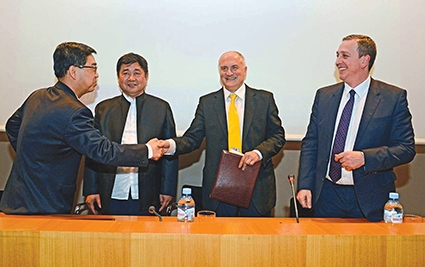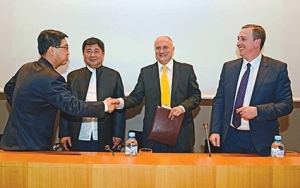Cooperation between Georgian and Chinese Museums
The aim of the Memorandum of Understanding, which was signed between the Georgian National Museum and the Chinese Palace Museum on April 1, is the care and preservation of a unique collection of Chinese culture housed in one of the networks of the Georgian National Museum (GNM). The initiative belonged to the Chinese side, although the Memorandum is also expected to bring many benefits for Georgia.
GNM’s oriental collections are preserved at the Shalva Amiranashvili Museum of Art in Tbilisi. The collections include exhibits of Egyptian, Islamic and Far East cultures. A vast range of items are on display, such as ceramic dishes, decorated weapons, paintings and costumes. “We own a very important collection. Soon we will begin work on their detailed study, conservation, restoration – these are one of the main formats of our cooperation with our Chinese colleagues,” said General Director of the Georgian National Museum, David Lordkipanidze.
In the framework of the Memorandum, exchange exhibitions will take place, public lectures and educational programs will be organized and Georgian scientists will be sent to China for training to raise the level of employee qualification.
Georgian Minister of Culture and Monument Protection, Mikheil Giorgadze, noted that the signing of this Memorandum is doubly important considering the international community’s increased interest regarding Georgian museums. “Our museums are successful at cooperating with major international organizations, and today’s new agreement once again confirms this. It is also especially important that we are seen as an important strategic partner,” said the Minister.
With over 15 million annual visitors, the Palace Museum is the most visited museum in the world. The Museum is located in the center of Beijing and represents a grand architectural complex consisting of 980 buildings. During the mid-Ming and the Qing Dynasties, it was the imperial palace and it was recognized as such in 1987 when the complex was declared a World Heritage Site. The collections of the Palace Museum include ceramics, paintings, calligraphy, bronzes, timepieces, jades, palace paraphernalia, ancient books, and historical documents.
The Palace Museum is listed by UNESCO as holding the largest collection of preserved ancient wooden structures in the world.
“I admire the collection stored in your Museum,” Director of the Palace Museum, Shan Jixiang, told his Georgian counterpart. “In the near future, we plan to work closely and launch a lot of interesting joint projects with the GNM.”
Eka Karsaulidze












